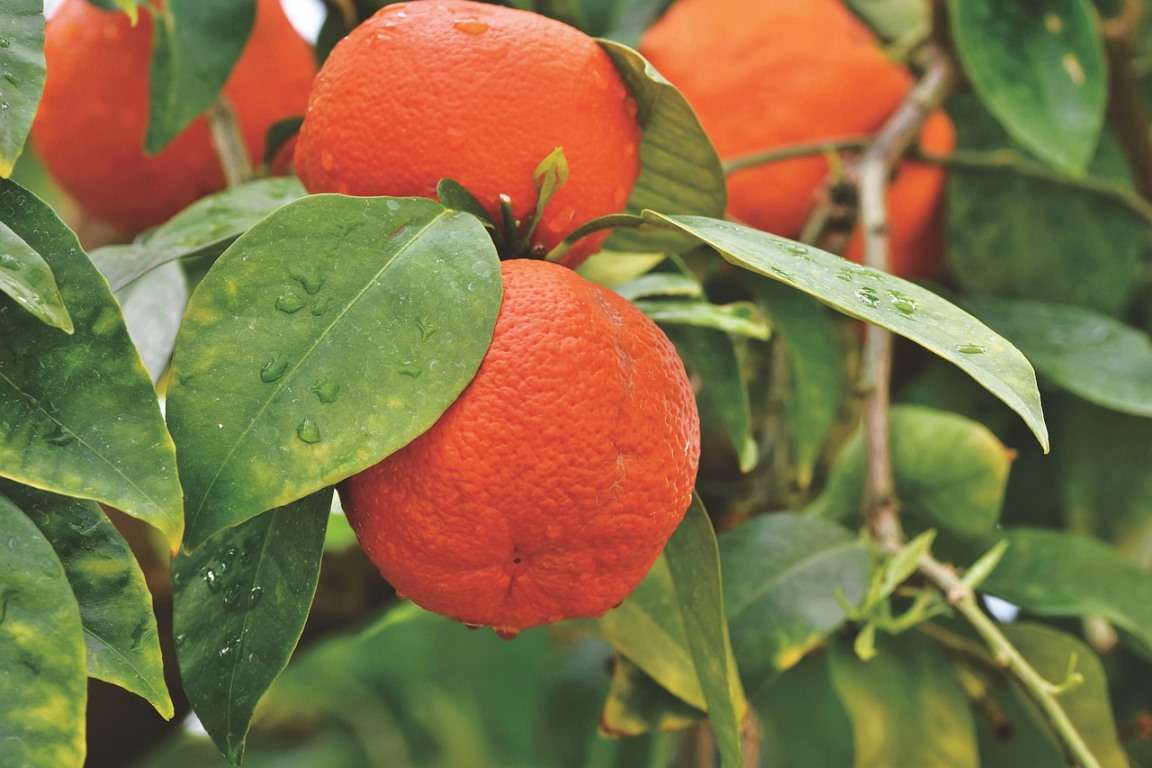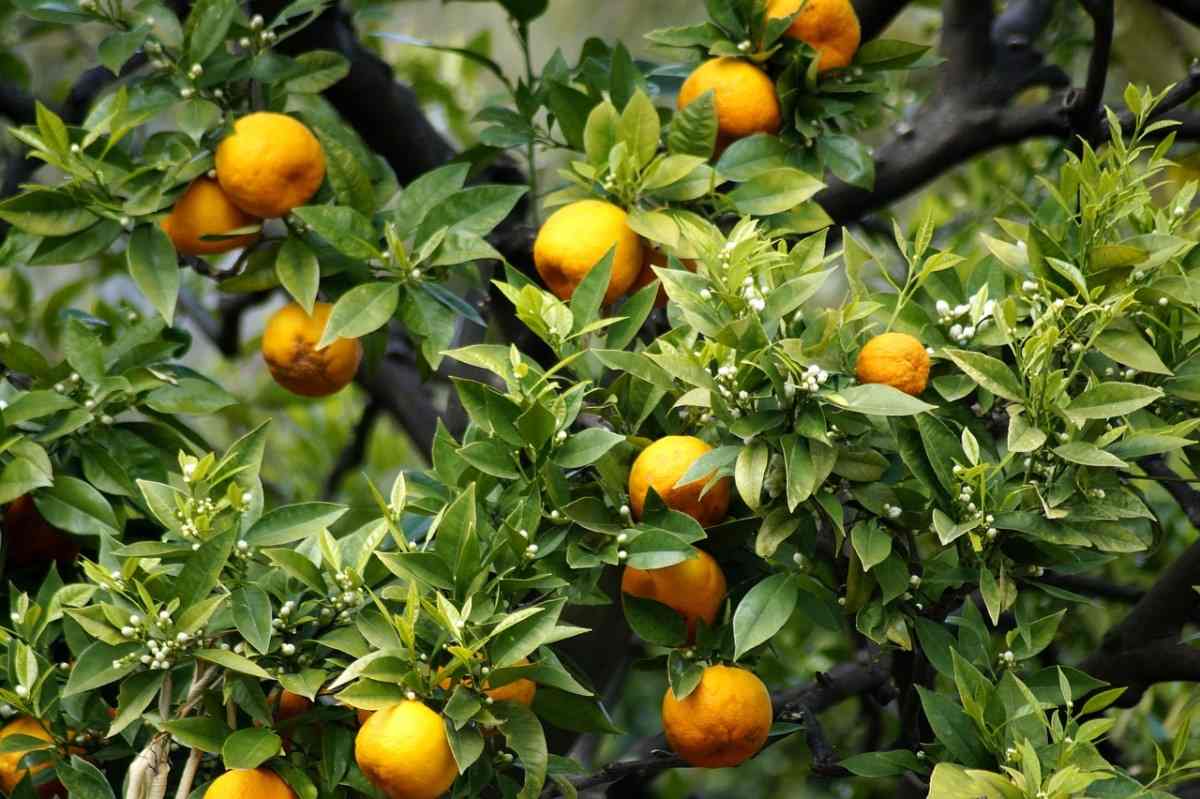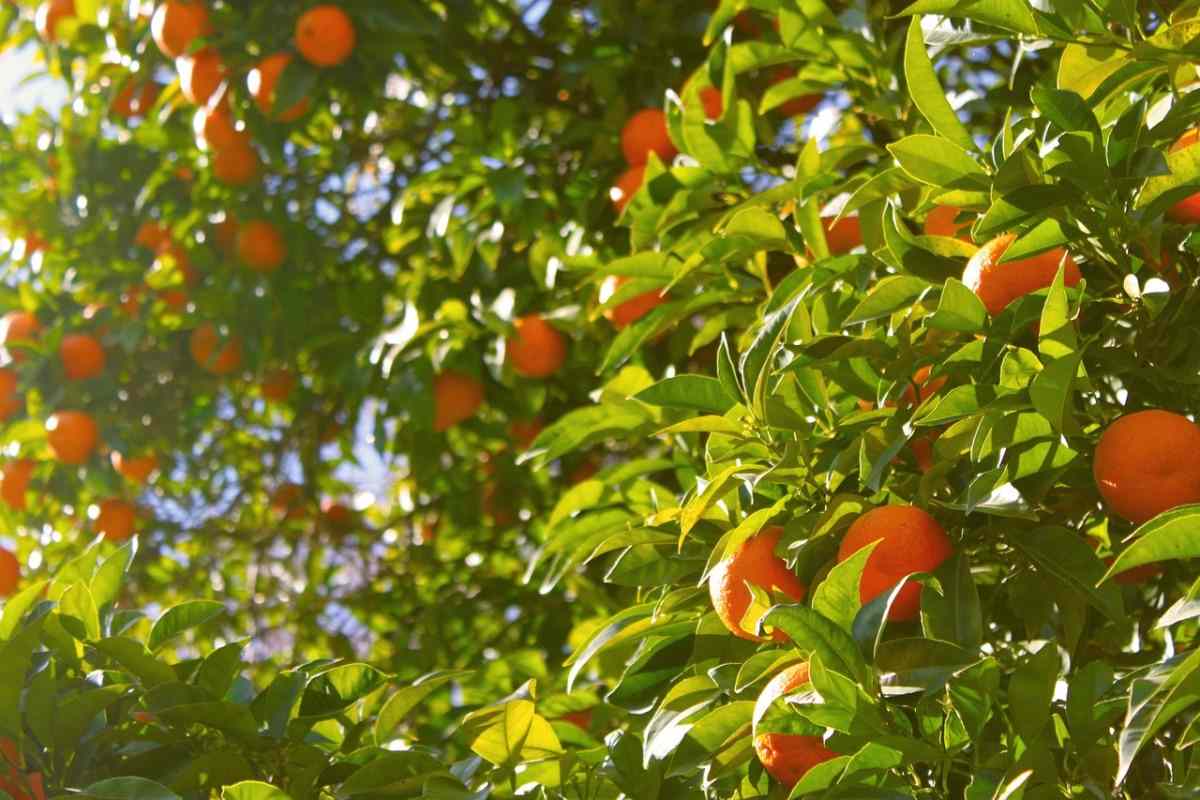Introduction on How To Start Orange Gardening for Beginners, FAQs: Hello gardeners, we are here with one more topic. Do you want to grow orange trees and do you have any doubts about planting and growing orange trees? Well and then you will need to follow this complete article to have a perfect orange tree. In this article, we are going to discuss some frequently asked questions about planting orange plants.
The orange is the fruit of several citrus species in the Rutaceae family and it is most commonly associated with Citrus sinensis, also known as sweet orange, to distinguish it from the related Citrus aurantium, popularly known as bitter orange.
A Step By Step Guide to Orange Gardening for Beginners, Questions, and Answers, Planting FAQs

Seeded orange seeds can be extracted directly from the fruit.
Soak the seeds in water for a few minutes. The seeds will need to soak for at least 24 hours in water. Remove any seeds that float to the top after a day or two.
Make your soil ready. Traditional potting mix can be used to grow orange tree seeds. Place your soil in trays and sow your seeds in an inch-deep hole. Cover with soil and add any compost or mulch to help the soil absorb nutrients.
Place in a warm location. Place your seeds in a warm, moist location with indirect sunshine once they’ve been planted. Place damp paper towels or plastic bags over the trays for a few weeks to keep the soil moist. Remove the coverings once the seeds have begun to sprout. Place in a warm area with plenty of sunlight. If natural light is scarce, use a grow light to supplement.
Transfer to separate pots. The seeds should continue to germinate and grow. Until the seedlings are ready to be transplanted into individual containers, keep them wet and warm. Keep the root ball undisturbed when transplanting. You need to plant in a container large enough to support the tree’s strong roots in well-draining soil. Place in a warm, well-ventilated area indoors with access to direct sunlight. Drainage holes should be present in your planters.
Now, let us discuss some frequently asked questions about planting orange
What is the rate of growth of orange trees?
When it comes to oranges, how long do they take to grow? Depending on how old the tree is initially purchased, it can take three to five years for an orange tree to bear fruit. When the tree eventually produces fruit, it takes 7 to 8 months for it to ripen.
When is the best time to plant oranges?
It takes time for orange trees to adjust to their new surroundings. Citrus trees should be planted in the early to mid-spring since they will have the entire spring and summer to establish themselves in the soil and benefit from the warm weather. Your soil must drain well and be fruitful.
How long does an orange seed take to sprout?
It can take anything from six to eight weeks for seeds to germinate. Meanwhile, the soil is not allowed to dry out, but it is also not allowed to become saturated, as this will cause the seed to rot. The seedling orange trees benefit from frequent water misting once the first genuine leaves develop.
What’s the deal with my oranges not turning orange?
Lack of sunlight is the most common cause of citrus fruit failure. Trees grown beneath larger trees or near structures may not receive enough sunshine to mature their fruits. Trees that are placed too close together may not produce ripe fruit.
When orange blossoms bloom, do they transform into oranges?
The majority of orange blooms do not develop into fruit and fall off the tree at the end of their bloom. Navel oranges need seven to twelve months to ripen after the blooms bloom, while ‘Valencia’ oranges take 12 to 15 months.
How can I speed up the growth of my orange tree?
In case if you miss this: Pumpkin Seed Germination.

If you want your fruit tree to grow larger, the best option is to apply a nitrogen-rich fertilizer, such as one with an N-P-K ratio of 2-1-1 or 3-1-1. It would also be advantageous if the fertilizer was somewhat acidic, as citrus trees, particularly oranges, prefer slightly acidic soil.
Is it necessary for an orange tree to be in direct sunlight?
Citrus cultivars that flourish in subtropical climates are known as orange trees. Orange trees, both regular and dwarf thrive in full sun but may also withstand partial shade. Even though they love to be in the sun all day, they may still stay healthy if they get 6 to 8 hours of sunlight per day.
What is the maximum height of an orange tree?
Grapefruit and orange trees can reach heights of 18 to 22 feet, whereas dwarf kinds only reach 8 to 12 feet. Because most citrus cultivars are self-fertile, only one tree is required to produce fruit.
Is it possible to develop an orange tree from an orange purchased in a store?
Anyone who has ever peeled and eaten an orange knows that it can contain a dozen or more seeds. The better news is that most orange seeds can grow into plants, and you can even plant orange seeds from the shop.
What is the most effective method for germinating orange seeds?
Plant the cleaned seeds in potting soil and cover them with a half-inch layer of dirt. Maintain wet but not damp soil. Place the planting container in a warm location and cover it with a plastic bag or plastic wrap. Keep in mind that at this point, the seed does not require direct sunshine.
Is it possible to plant an orange tree indoors?
If you have the space and are prepared to give this citrus species the attention it requires, you can establish a huge indoor orange tree. Dwarf plants can survive inside if their fundamental soil and light requirements are met. The majority of commercially grown citrus planters are too huge to grow indoors.
Where should I plant my orange tree?
How About This: How To Grow Strawberries In Greenhouse.

Full sun and well-draining soil are ideal for orange trees. They’ll require at least 15 feet of space away from other trees, electrical wires, and buildings, and even further away from septic tanks and drain fields. Planting against a south-facing wall provides additional warmth in chilly climes.
Is it true that orange trees require a lot of water?
Make sure your trees get enough water. The orange tree requires 1.5 inches of water per week on average as it grows. The exact amount of water your tree will require to grow once it is mature is determined by the amount of rainfall you receive each year, as well as other climate factors.
Is it true that oranges turn yellow before they turn orange?
When immature, all citrus fruits are green, but as they mature and ripen, they turn a yellow or orange tint. This color shift can help you determine when it’s time to conduct ripeness testing. Remember that not all citrus kinds and hybrids turn entirely orange or yellow when fully ripe.
Why the oranges on my orange tree are sour?
It takes more than one element to turn sweet oranges sour. The location of the trees (climate, soil, etc.); irrigation; fertilizers used; harvest timing (how early or late you harvest the oranges); and tree care are just a few of the variables.
What is the best orange tree fertilizer?
For best growth, orange trees require a balanced fertilizer (or one with slightly more nitrogen) that contains nitrogen, phosphorus, potassium, as well as the micronutrients iron, manganese, and zinc. To get the best results from your fruit trees, use a fertilizer ratio of no more than 8-8-8.
When do orange trees begin to bloom?
Early in the winter, oranges begin to form bloom buds. They grow slowly from late winter to early spring, blossoming in April on average, and produce so many blossoms that up to 99% of them fall off before setting fruit.
Is it possible for an orange tree to survive the winter?
Temperatures of 13°C to 38°C are ideal for orange trees (Citrus sinensis). In the winter, when temperatures dip from 2°C to 13°C, they go dormant. During frosts, young trees are also injured and may die, although adult trees have been known to survive for 10 hours in temperatures below -4°C.
Is it true that orange trees enjoy coffee grounds?
Coffee grinds provide phosphate, magnesium, nitrogen, copper, and even potassium to the soil where the orange tree is planted, changing the nutrients available. Putting coffee grounds in the soil enhances the soil structure both instantly and over time as the grounds decompose.
Why is my orange tree taking such a long time to grow?
Soil – Compacted soil lacks the drainage capacity required for optimal orange tree growth; orange trees require adequate moisture circulation throughout the topsoil as well as inside the underground structure of the soil. Any water that accumulates above or below ground might cause disease in the orange tree.
What is the best season to plant orange trees?
The best time to plant a potted orange tree is in the spring. Fill the bottom part of the new container with a well-draining potting mix.
Is it necessary to dry orange seeds before planting?
Orange seeds germinate best when planted right away and should not be allowed to dry out completely. However, any moisture on the seed coat should be dried off after sowing to reduce the risk of fungal infections.
Is it true that orange trees produce fruit every year?
Orange trees are evergreen, but unlike many lime and lemon trees, they do not produce fruit all year. Each tree bears only one plant each year, with some kinds taking up to ten months to bear fruit.
How many orange seeds should I plant?
To enhance the chances of successful germination, use at least four orange seeds and thoroughly rinse them in cool, clean water to remove any leftover sugars. While you prepare the pots, you need to spread the orange seeds on a layer of paper towel to dry.
What type of soil does an orange tree prefer?
Orange plants thrive in soil that is naturally rich in nutrients. If the soil is healthy, don’t add additions like compost or peat moss. When there is too much fertilizer in the soil around the root ball, it promotes foliage growth but not blooming or fruiting.
How often should an orange plant be watered?
Feel the soil of the plant before watering, but in general, watering your orange tree once or twice a week throughout the summer months should suffice. Once or twice every two weeks during the winter should suffice.
What are the requirements for growing oranges?
We need sunlight, water, and excellent cultural practices like fertilizers and trimming to grow oranges. Our trees also benefit from around 30 days of 0°C temperatures to keep the fruit firm and fresh. The colder temperatures slow leaf growth, allowing the fruit to mature and last longer.
What are the different types of orange diseases?
- Anthracnose Colletotrichum gloeosporioides
- Armillaria root rot (Mushroom root rot) Armillaria mellea
- Black root rot Thielaviopsis basicola
- Blast Pseudomonas syringae
- Brown rot Phytophthora spp
- Melanose Diaporthe citri
What is the appearance of a diseased orange tree?
Yellowing patterns, short upright leaves, leaf drop, and dieback are all signs to look for. The fruits will be tiny, irregular, and bitter.
What is the best way to care for an orange plant?
- Make sure your trees get enough water. The greatest water will be required by newly planted orange trees.
- Fertilize your plants using fertilizer. There are various sorts of fertilizers, and the one you apply will have an impact on your crop.
- Pruning your orange trees is a good idea.
- Harvest at the right time.
Why are the leaves on my orange tree curling up?
If your orange leaves are curling, it could be due to a fungal infection. Leaf curling is caused by both bacterial blast and botrytis disease. The bacterial blast starts with black patches on the petiole and then spreads to the axil. The leaves eventually curl, wither, and fall off.
Is it possible to overwater an orange tree?
The leaves of an orange tree can turn pale green or yellowish if they are overwatered. The browned leaves may go off over time. Reduce the amount of water you use until the symptoms go away. If the symptoms persist or the tree begins to deteriorate, the fungi that cause root rot may have already infiltrated the roots.
When should my orange tree be fertilized?
Fertilize most producing trees in the early spring, before the blossoms appear. If you miss your early feeding, wait until the fruit is approximately the size of a pea to fertilize it, which is normally about mid-May.
Is it OK to use Epsom salt on orange trees?
Epsom salts can be fed directly to outdoor trees from the box. Indoor orange trees should be watered once a month with a solution of 2 teaspoons Epsom salts in 1 gallon of water. Switch to a balanced, citrus-specific liquid fertilizer once the plant has recovered from any deficiencies.
- How to Grow Hibiscus from Flower
- Plantation Ideas for Home Decoration: A Beginners Guide
- Flower Garden Designs and Layouts for Beginners
- Planting and Spacing Techniques in Papaya: A Beginner’s Guide
- Growing Gold: Essential Techniques for Planting Pineapples
- How to Make Kalanchoe Plant Bushy: Home Remedies and Solutions
- 11 Reasons Why Your Gardenia is Not Blooming: Home Remedies and Solutions
- Eco Elegance: The Guide to Designing a Drought-Tolerant Landscape
- Gardening on a Slope: Strategies for Hillside Landscaping
- Nourish and Flourish: Top Organic Mulches for Thriving House Plants
- Everything You Want to Know about Indian Mogra Flower: Discover Uses and Growing
- Green Thumb Success: Expert Tips for Cultivating Greenhouse Pumpkins All Year Round
- Maximize Growth & Flavor: The Ultimate Guide to Companion Planting in Herb Gardens
- How to Control Rhododendron Problems Naturally: Home Remedies and Organic Ways to Fix Them
- Natural Magic: The Remarkable Benefits of Cinnamon for Plants
- Best Steps to Revive Dying Tulip with Natural and Organic Treatment
- 10 Reasons Why Your Angel Trumpet is Not Blooming: Remedies and Treatment
- How to Fix Periwinkle Leaf and Flower-Related Problems: Natural Remedies and Solutions
- How to Fix Zinnias Leaf and Flower Problems: Discover Natural and Home Remedies
- Organic Steps to Induce Lemon Tree Flowers: A Comprehensive Guide
- Bloom Booster: Crafting the Perfect Homemade Bougainvillea Fertilizer
- Optimizing Growth: A Guide to Applying NPK Fertilizer for Potted Plants
- 10 Best Homemade Fertilizers for Rubber Plant: DIY Recipes and Application Method
- How to Boost Female Pumpkin Flowers: Effective Steps for More Flowers and High Yields
- Transform Your Indoor Garden: Top Benefits of Pink Salt for Houseplants
- 10 Best Homemade Fertilizers for Peacock Plants (Calathea): Easy DIY Guide
- Unlock Blooms: 9 Reasons Why Your Potted Chrysanthemum is Not Blooming
- 8 Reasons Why Your Potted Hibiscus is Not Blooming: Fix it with Simple Solutions
- Unlock Blooms: 9 Key Reasons Your Potted Frangipani Won’t Flower
- 10 Reasons Why Is My Ice Plant Not Blooming: Remedies and Treatment
- 10 Reasons Why My Potted Hydrangea Not Blooming: Treatment and Remedies
- 10 Reasons Why is My Wisteria Not Blooming: Remedies and Treatment
- 10 Reasons Why is My Goldfish Plant Not Blooming: Remedies and Treatment